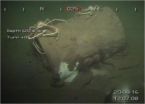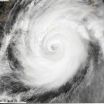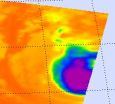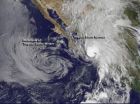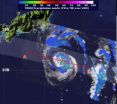(Press-News.org) Millions of pounds of unexploded bombs and other military ordnance that were dumped decades ago in the Gulf of Mexico, as well as off the coasts of both the Atlantic and Pacific oceans, could now pose serious threats to shipping lanes and the 4,000 oil and gas rigs in the Gulf, warns two Texas A&M University oceanographers.
William Bryant and Neil Slowey, professors of oceanography who have more than 90 years of combined research experience in all of the Earth's oceans, along with fellow researcher Mike Kemp of Washington, D.C., say millions of pounds of bombs are scattered over the Gulf of Mexico and also off the coasts of at least 16 states, from New Jersey to Hawaii.
Bryant says the discarded bombs are hardly a secret. "This has been well known for decades by many people in marine science and oceanography," he explains.
He will give a presentation in San Juan, Puerto Rico Monday (Oct. 1) about the bombs to a group of oceanographers and marine scientists in a conference titled "International Dialogue on Underwater Munitions."
"This subject has been very well documented through the years," Bryant explains. "My first thought when I saw the news reports of the Deepwater Horizon explosion in the Gulf two years ago were, 'Oh my gosh, I wonder if some of the bombs down there are to blame.'"
Military dumping of unused bombs into the Gulf and other sites started in 1946 and continued until 1970, when it was finally banned.
Millions of pounds – no one, including the military, knows how many – were sent to the ocean floor as numerous bases tried to lessen the amount of ordnance at their respective locations.
"The best guess is that at least 31 million pounds of bombs were dumped, but that could be a very conservative estimate," Bryant notes.
"And these were all kinds of bombs, from land mines to the standard military bombs, also several types of chemical weapons. Our military also dumped bombs offshore that they got from Nazi Germany right after World War II. No one seems to know where all of them are and what condition they are in today."
Photos show that some of the chemical weapons canisters, such as those that carried mustard gas, appear to be leaking materials and are damaged.
"Is there an environmental risk? We don't know, and that in itself is reason to worry," explains Bryant. "We just don't know much at all about these bombs, and it's been 40 to 60 years that they've been down there."
With the ship traffic needed to support the 4,000 energy rigs, not to mention commercial fishing, cruise lines and other activities, the Gulf can be a sort of marine interstate highway system of its own. There are an estimated 30,000 workers on the oil and gas rigs at any given moment.
The bombs are no stranger to Bryant and Slowey, who have come across them numerous times while conducting various research projects in the Gulf, and they have photographed many of them sitting on the Gulf floor like so many bowling pins, some in areas cleared for oil and gas platform installation.
"We surveyed some of them on trips to the Gulf within the past few years," he notes. "Ten are about 60 miles out and others are about 100 miles out. The next closest dump site to Texas is in Louisiana, not far from where the Mississippi River delta area is in the Gulf. Some shrimpers have recovered bombs and drums of mustard gas in their fishing nets."
Bombs used in the military in the 1940s through the 1970s ranged from 250- to 500- and even 1,000-pound explosives, some of them the size of file cabinets. The military has a term for such unused bombs: UXO, or unexploded ordnance.
"Record keeping of these dump sites seems to be sketchy and incomplete at best. Even the military people don't know where all of them are, and if they don't know, that means no one really knows," Bryant adds. He believes that some munitions were "short dumped," meaning they were discarded outside designated dumping areas.
The subject of the disposal of munitions at sea has been discussed at several offshore technology conferences in recent years, and it was a topic at an international conference several years ago in Poland, Bryant says.
"The bottom line is that these bombs are a threat today and no one knows how to deal with the situation," Bryant says. "If chemical agents are leaking from some of them, that's a real problem. If many of them are still capable of exploding, that's another big problem.
"There is a real need to research the locations of these bombs and to determine if any are leaking materials that could be harmful to marine life and humans," Bryant says.
INFORMATION:
For more information about the underwater munitions conference, go to
http://www.underwatermunitions.org/
Media contact: Keith Randall, News & Information Services, at (979) 845-4644 or keith-randall@tamu.edu or William Bryant at (979) 845-2680 or wbryant@ocean.tamu.edu
More news about Texas A&M University, go to http://tamutimes.tamu.edu/
Follow us on Twitter at http://twitter.com/tamu/
Time bomb: Military ordnance in Gulf poses threat to shipping, says Texas A&M proffesor
2012-09-29
ELSE PRESS RELEASES FROM THIS DATE:
IUCN adopts new 'Green List' to show species on the path to conservation success
2012-09-29
The IUCN World Conservation Congress has adopted a motion sponsored by the Wildlife Conservation Society and partners to create a Green List to assess conservation success. The Green List for Species would include species identified as 'fully conserved,' which are those that exist in ecologically significant numbers, interacting fully with other species in their ecosystems.
The motion was adopted at the World Conservation Congress, which was held this month in Jeju, Republic of Korea.
The aim of the Green List is to highlight species that are thriving parts of a healthy ...
NASA sees super Typhoon Jelawat Affecting Japan
2012-09-29
Super Typhoon Jelawat is a large and powerful storm that has been bringing very rough seas to areas in the western North Pacific. NASA's Terra satellite passed over the monster storm and captured a visible image as it nears the big island of Japan.
NASA's Terra satellite passed over Super Typhoon Jelawat on Sept. 28 at 0238UTC (10:38 p.m. EDT, Sept. 27) and the Moderate Resolution Imaging Spectroradiometer captured an infrared image as the storm approaches Okinawa, Japan.
Jelawat's center passed by Ishigaki-jima by 1500 UTC (11 a.m. EDT) on Sept. 28 and was approaching ...
NASA sees sun unleash a wide, but benign, CME
2012-09-29
The sun erupted with a wide, Earth-directed coronal mass ejection (CME) on Sept. 27, 2012 at 10:25 p.m. EDT. CMEs are a phenomenon that can send billions of tons of solar particles into space that can reach Earth one to three days later, affecting electronic systems in satellites and on the ground. Experimental NASA research models estimate that the CME is traveling at around 700 miles per second and will reach Earth on Sept. 29.
CMEs of these speeds are usually benign. In the past, similar CMEs have caused auroras near the poles but have not caused disruption to electrical ...
NASA sees stubborn Nadine intensify into a hurricane again
2012-09-29
Infrared data from NASA's Aqua satellite today, Sept. 28, revealed strong convection and thunderstorms have built up again in Tropical Storm Nadine as it moved over warm waters in the Eastern Atlantic Ocean. That convection strengthened Nadine back into a hurricane today. Nadine has lasted over two weeks, but is nowhere near breaking the record for longest-lived tropical cyclone.
NASA's Aqua satellite passed over long-lived Nadine on Sept. 28 at 0441 UTC (12:41 a.m. EDT) when it was still a tropical storm and the Atmospheric Infrared Sounder (AIRS) instrument captured ...
NASA sees Tropical Storm Miriam takes final bow, replaced by Norman
2012-09-29
The National Hurricane Center issued their last advisory on Miriam on Sept. 27 at 11 p.m. EDT when it became a remnant low pressure area. At that time, the center of post-tropical cyclone Miriam was located near latitude 22.0 north and longitude 116.7 west, just over 400 miles west of the southern tip of Baja California. Miriam had maximum sustained winds near 30 knots (35 mph/55 kmh).
NOAA's GOES-15 satellite captured an infrared image of Tropical Storm Miriam and a developing low pressure area in the Eastern Pacific on Sept. 28 at 1145 UTC (7:45 a.m. EDT), off the coast ...
NASA sees many things happening in Tropical Storm Ewiniar
2012-09-29
There are a number of things happening under the hood of Tropical Storm Ewiniar's clouds that have been deciphered by satellite data today, Sept. 28, 2012, and NASA's TRMM satellite has noticed one area of heavy rainfall remaining.
NASA's Tropical Rainfall Measuring Mission (TRMM) satellite noticed light to moderate rainfall around most of the tropical storm, with the heaviest rainfall east of the center of circulation. Rainfall in that area was falling at a rate of 2 inches (50 mm) per hour).
Tropical Storm Ewiniar has a partially exposed low-level circulation center, ...
Notre Dame researchers part of team that discovered potentially dangerous new malaria mosquito
2012-09-29
University of Notre Dame entomologists are part of a team of researchers that recently discovered a potentially dangerous new malaria-transmitting mosquito. The as yet unnamed, and previously unreported, mosquito breeds in the western areas of Kenya and has an unknown DNA match to any of the existing malaria-transmitting species.
The Anopheles species of mosquitoes which transmits malaria in Africa is already widely studied by researchers. It prefers to rest indoors during the day and feed on humans during the night. Current malaria control programs, including spraying ...
Notre Dame receives $6.1 million NSF grant award to advance Quarknet Program
2012-09-29
The University of Notre Dame has received a five-year, $6.1 million award from the National Science Foundation to support the continuation of the nationwide QuarkNet program, which uses particle physics experiments to inspire students and provide valuable research, training and mentorship opportunities for high school teachers.
Through the QuarkNet program, physicists at Notre Dame, Fermilab and 50 other research institutions will continue to mentor teachers in research experiences, enabling them to teach the basic concepts of introductory physics in a context that high ...
Patient selection for bilateral total knee replacement needs improvement
2012-09-29
Because there are more risks with having a total knee replacement in both legs at the same time than having a knee replacement in one leg, doctors in recent years have been selecting younger and healthier patients for the bilateral procedure. Now a new study by researchers at Hospital for Special Surgery has revealed that although patients are younger and healthier than those undergoing only one-sided surgery, they are becoming sicker and some complication rates have risen.
"Although we are selecting younger people, we can't ignore the fact that the population in general ...
Moffitt Cancer Center researcher helps develop prostate cancer testing, treatment guidelines
2012-09-29
Julio M. Pow-Sang, M.D., chair of Moffitt Cancer Center's Department of Genitourinary Oncology, and colleagues have published two prostate cancer articles in the September issue of JNCCN – The Journal of the National Comprehensive Cancer Network. The articles review and clarify recent updates made to the National Comprehensive Cancer Network's (NCCN) guidelines for the screening and treatment of prostate cancer.
According to the NCCN, nearly 242,000 cases of prostate cancer will be diagnosed in 2012, accounting for 29 percent of new cancers among men. It is estimated ...
